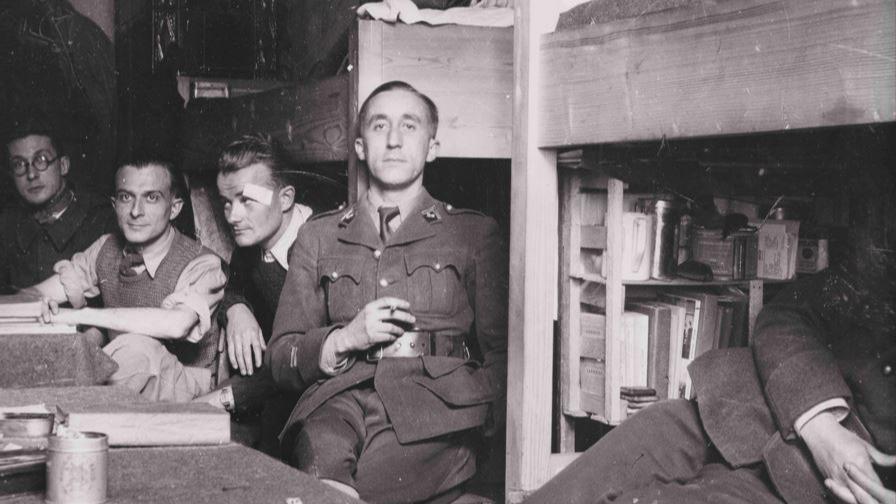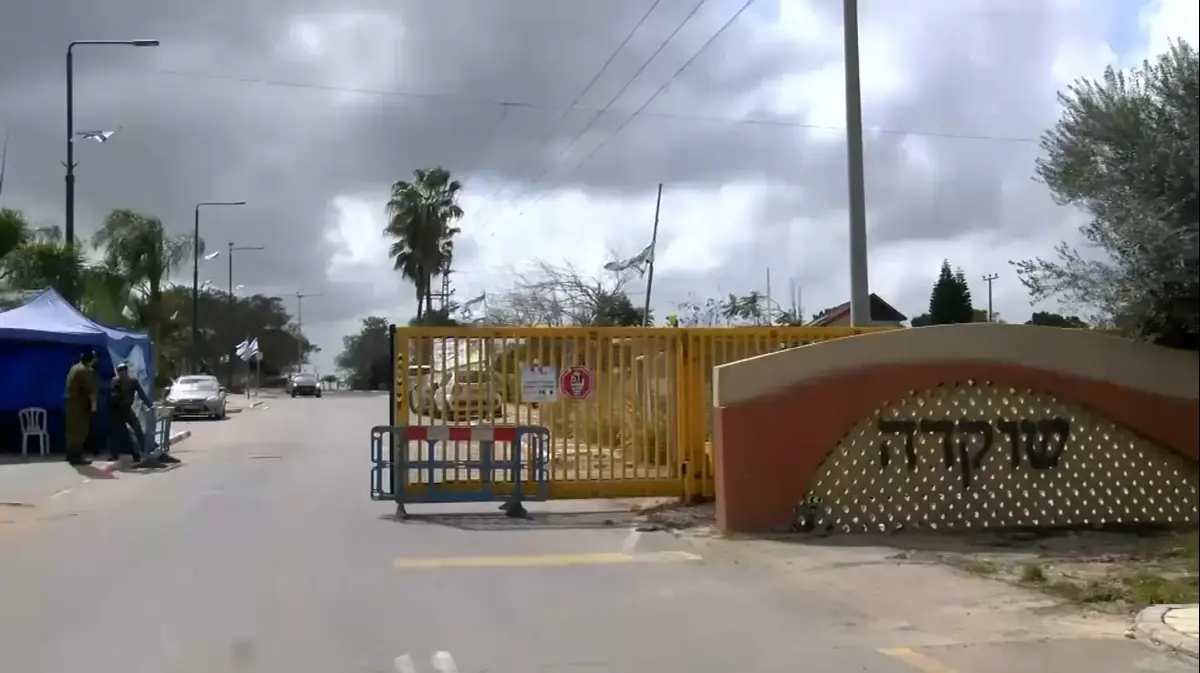Hallbergmoos - The redeeming message was posted by Karl Schäfer on January 18, 1956 at 11:10 am in Frankfurt / Main: “I'm coming,” telegraphed the long-missing father.
Arrival in three hours, at 2:28 p.m. in Munich.
With the Rheinblitz, an express train known at the time.
In 1956 the last prisoners of war returned from Russia.
One of them was Karl Schäfer from the then farming village of Hallbergmoos in the Freising district.
He was badly affected by eleven years of imprisonment, but his return home turned out to be a feast.
Only then did Franziska ("Fanny") Schäfer know that her missing husband would finally return home from Russia after eleven years of imprisonment.
Eleven years in which the world had changed.
The Nazi era was long over, Germany was in the frenzy of the economic miracle.
VW Beetle, Adenauer, first holiday in Italy, maybe even a television set - that is what we associate with this era today.
Karl Schäfer was not familiar with any of this.
For him, the eleven years between 1945 and 1956 were marked by imprisonment, forced labor in a mine, freezing cold, death and humiliation.
In 1956, however, that was over: With the last so-called return transport, Karl Schäfer, then 45, came back to Hallbergmoos, which was then a farming village with a few hundred inhabitants.
The history of his return was researched by the local history researcher Karl-Heinz Zenker from Hallbergmoos - at his instigation, Schäfer's daughter Gerda Fröhlich looked in drawers and found a lot of old documents, including reports in what was then "Münchner Merkur", which showed the triumphant return of the prodigal son illustrate.
The documents are 65 years old and shed light on an almost forgotten piece of contemporary history.
Huge cheers in the home village
The reception in Hallbergmoos for Karl Schäfer was phenomenal, recalls Gerda Fröhlich, née Schäfer.
“The whole place was on its feet.” It started already at the main station - not only was the then Hallbergmooser mayor waiting for the long-missing person, but also a number of relatives and the evangelical bishop (shepherd was Protestant) in addition to his wife and daughter.
And in Hallbergmoos the brass band played a flourish, Schäfer received flowers and presents.
"Two girls recited verses and elementary school students sang a homeland song," the newspaper reported.
And that was just the beginning.
A few days later there was a huge celebration in the inn in honor of the late returnee.
School children sang, the district administrator gave a poignant speech, and Schäfer was showered with gifts: the mayor gave a gift basket.
Also a gift basket from the homecoming association.
And from the warrior club: another gift basket.
There is also a wall clock, a beer mug, a flower table, a smoking service and a briefcase.
You can tell: Nobody wanted to be ripped off.
+
Reception in the village: The then mayor presents flowers to Karl Schäfer and his wife Fanny.
© private
The arrival of the late returners was an event that kept the whole of West Germany in suspense.
It was Federal Chancellor Konrad Adenauer who negotiated the so-called “return of the ten thousand” during a visit to Soviet ruler Nikita Khrushchev in September 1955.
Adenauer was once again the folk hero - a photo from back then shows a mother kissing his hand in gratitude, gripped.
On October 7, 1955, the first released returnees arrived at the Friedland transit camp.
Then further transports - and with the very last one also Karl Schäfer.
Historians point to this today.
that among the late returnees there were also a number of highly stressed SS officers and Nazi criminals such as security guards from the former Sachsenhausen concentration camp - but also many normal Wehrmacht soldiers.
Men like Karl Schäfer.
In the photos from that time we see an older man with a hat and a long trench coat and tie.
"He looks like a 60-year-old," says daughter Gerda Fröhlich.
The detention had scarred him badly.
Schäfer suffered from tuberculosis and was "injured in body and soul," as historian Karl-Heinz Zenker thinks.
Nevertheless, Karl Schäfer insisted on speaking about his imprisonment before the festive meeting in the Altes Wirt von Hallbergmoos - "among other things, his statements about the Russian justice system were very informative," the newspaper said.
The daughter had to grow up fatherless
Daughter Gerda had last seen her papa in January 1945 at the age of eleven months.
The war was almost over.
But not for Karl Schäfer.
His daughter had to grow up fatherless - but knew very well that her papa was not dead.
Schäfer was probably allowed to send the first sign of life one or two years after the capture.
The card could only contain 15 written words - that was the upper limit.
Post from Russia kept coming back, sometimes with gaps for years.
In 1952 the family learned that Karl Schäfer had meanwhile been held captive in a special camp on Lake Baikal, almost on the Mongolian border.
She sent packages with tins - and learned later that often only half arrived.
The conditions for the German prisoners defied description: malnutrition, illness, fear of imminent death, and in between there was hope of an early release.
In 1949 Schäfer was even sentenced to 25 years as a “labor and education camp”, later another year was added “for not complying with his work standard”.
Draconic punishments, later reduced again, but the shepherds were hard hit.
"He looks like a 60-year-old."
Gerda Fröhlich about her dad in the photos
As a former officer, Karl Schäfer found his way into civil life with great difficulty.
Gerda Fröhlich still remembers the tedious administrative procedures - "he had to fight his way through the bureaucracy, and that without a telephone".
It was only after four years that he found an accountant position at an Italian company that produced candidate fruits.
He later moved to Texas Instruments.
In private life, however, things didn't go so well.
The marriage was in crisis, Karl Schäfer and his fanny had become estranged after so long years.
Finally, Karl Schäfer moved to his hometown Frankfurt / Main.
The couple separated.
"My father died in 1986 of severe pneumonia," reports his daughter.









